The legacy of the Pond Lily Company: From industry to ecological renewal
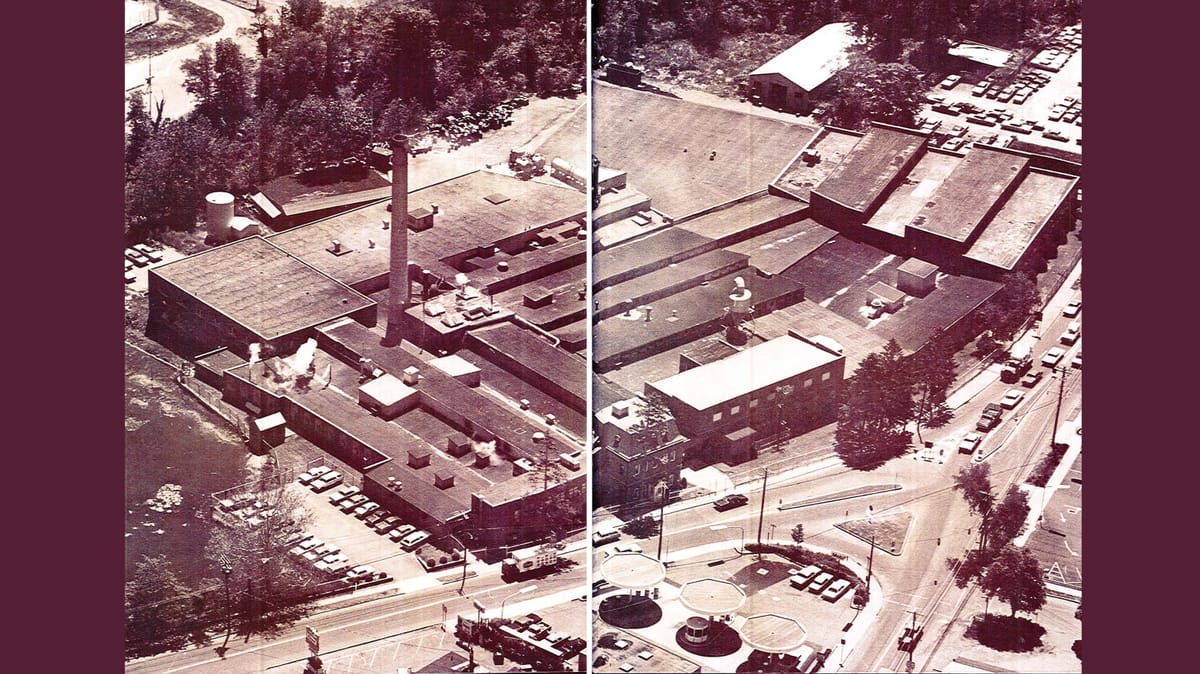
Today, the Pond Lily Nature Preserve in New Haven is part of the West River watershed located just downstream past the Woodbridge town line. The pond itself was formed in 1794 by a dam built on the West River for Levi Sperry’s grist mill. From these beginnings the site continued to support over two centuries of industrial activity, including paper and iron manufacturing. The Pond Lily Company, the site’s largest operation, closed in 1978 and its last factory buildings were demolished in the late 1980s. There's a story to tell!
The Pond Lily Company’s history was inseparable from the land it occupied and was also intertwined with the members of the Sperry family who led the company through the years. From colonial times to the modern era, the history of this enterprise is captured in the publication The Pond Lily Company: The Story of One American Business.
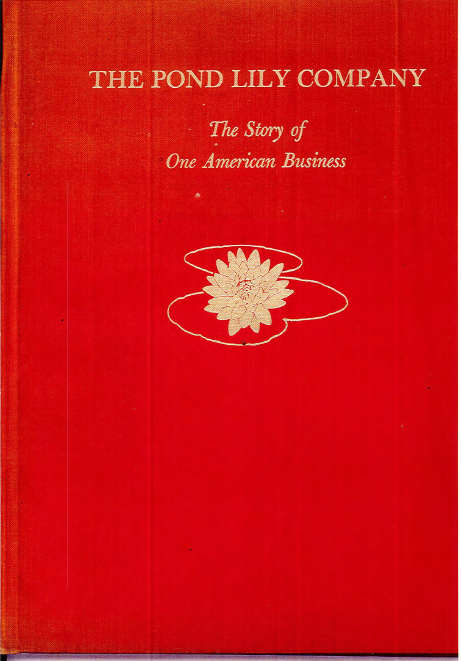
The story begins by recounting the familiar tale of Richard Sperry aiding the regicides and goes on to tell about the 1794 grist mill built by his great-great-grandson Levi Sperry (1754-1828), that served local farmers at the turn of the 19th century. Let's look at the connection between Levi Sperry and his brother Eliakim who are both buried at Eastside Cemetery on Pease Road in Woodbridge (it is this Eliakim's great-grandson Sereno Sperry and his sons who would eventually run the Pond Lily Company at this former mill site):
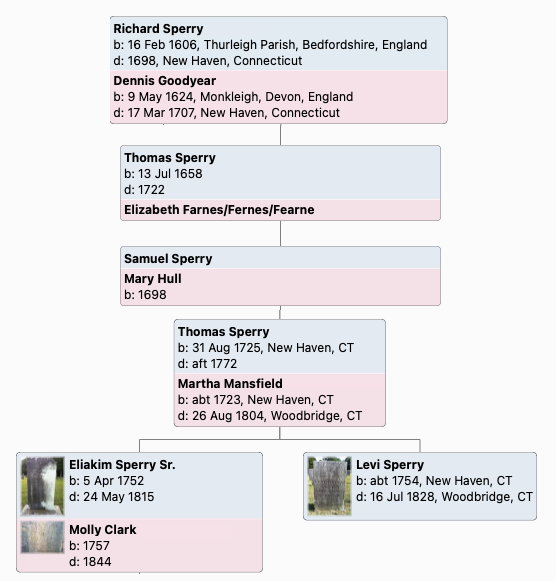
The company’s history goes on to tell how the mill transitioned to producing carriage springs and axles, adapting to the growing demands of industrialization as New Haven became the “carriage capital of the world” in the years surrounding the Civil War. Despite challenges, such as a devastating fire in 1856, the mill continued to evolve, entering the paper industry in the mid-19th century. Its new name, the Pond Lily Mill, reflected the serene beauty of the lilies that thrived in its pond.
By the 20th century, the Pond Lily Company had transformed again, focusing on textiles and contributing to wartime efforts by supplying fabric for military use. Innovation became a hallmark, with the Sperry family guiding the company through depressions, wars, and technological revolutions. Their foresight ensured the company remained a vital part of the community and the broader industrial landscape.
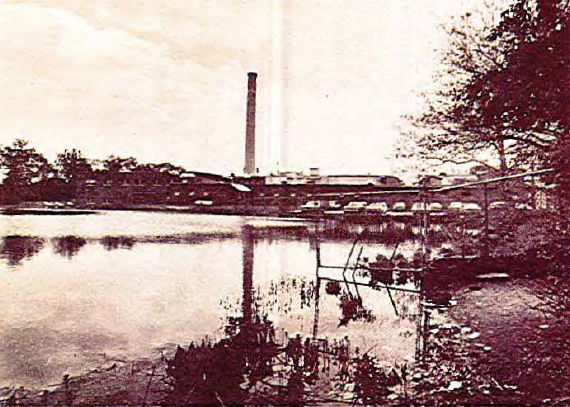
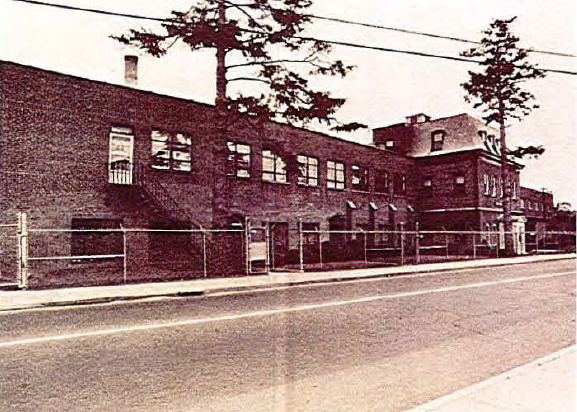
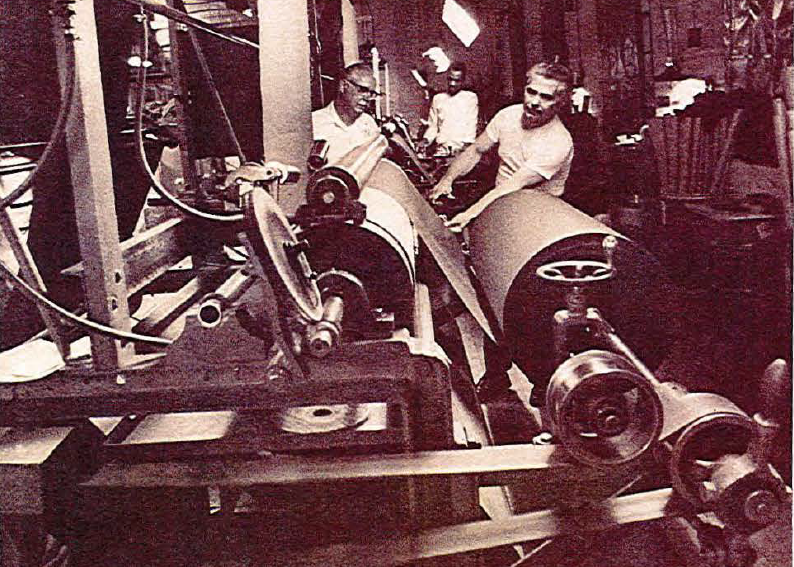
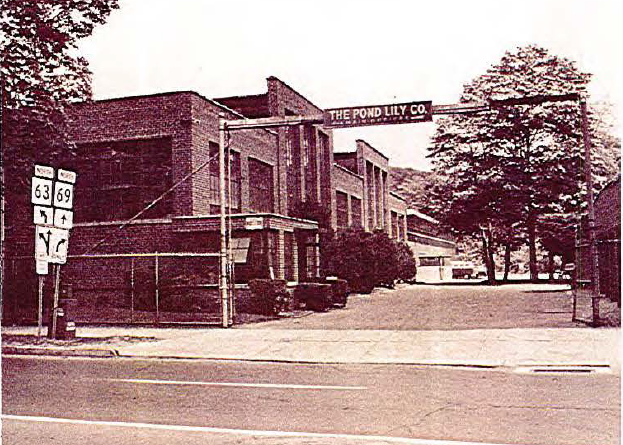
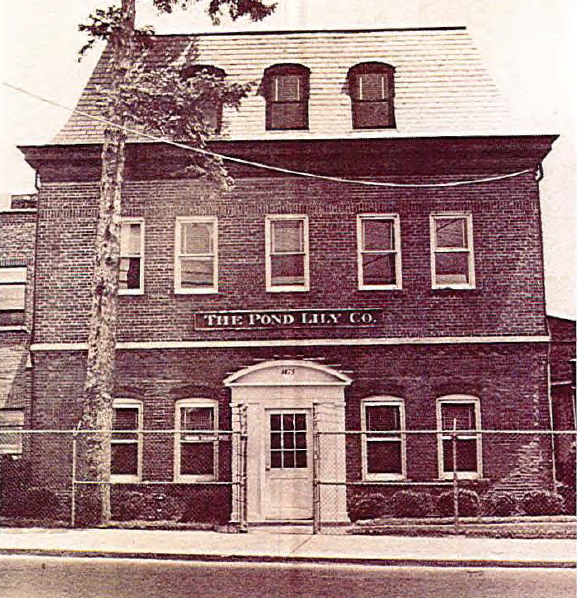
Images from the publication 'The Pond Lily Company: The Story of One American Business'.
What seems to set the Pond Lily Company apart is its enduring connection to the Sperry family and its association with the land in this area. This continuity bridges centuries of change, linking the colonial spirit of Richard Sperry's family who farmed this area beginning in the 1640s to the modern innovations of his descendants. Reading about the company's history we come to see that the land is not merely a backdrop but a central character in the company’s narrative, shaping and being shaped by the industries that thrived upon it. Let's look more closely at some of these Sperry family members.
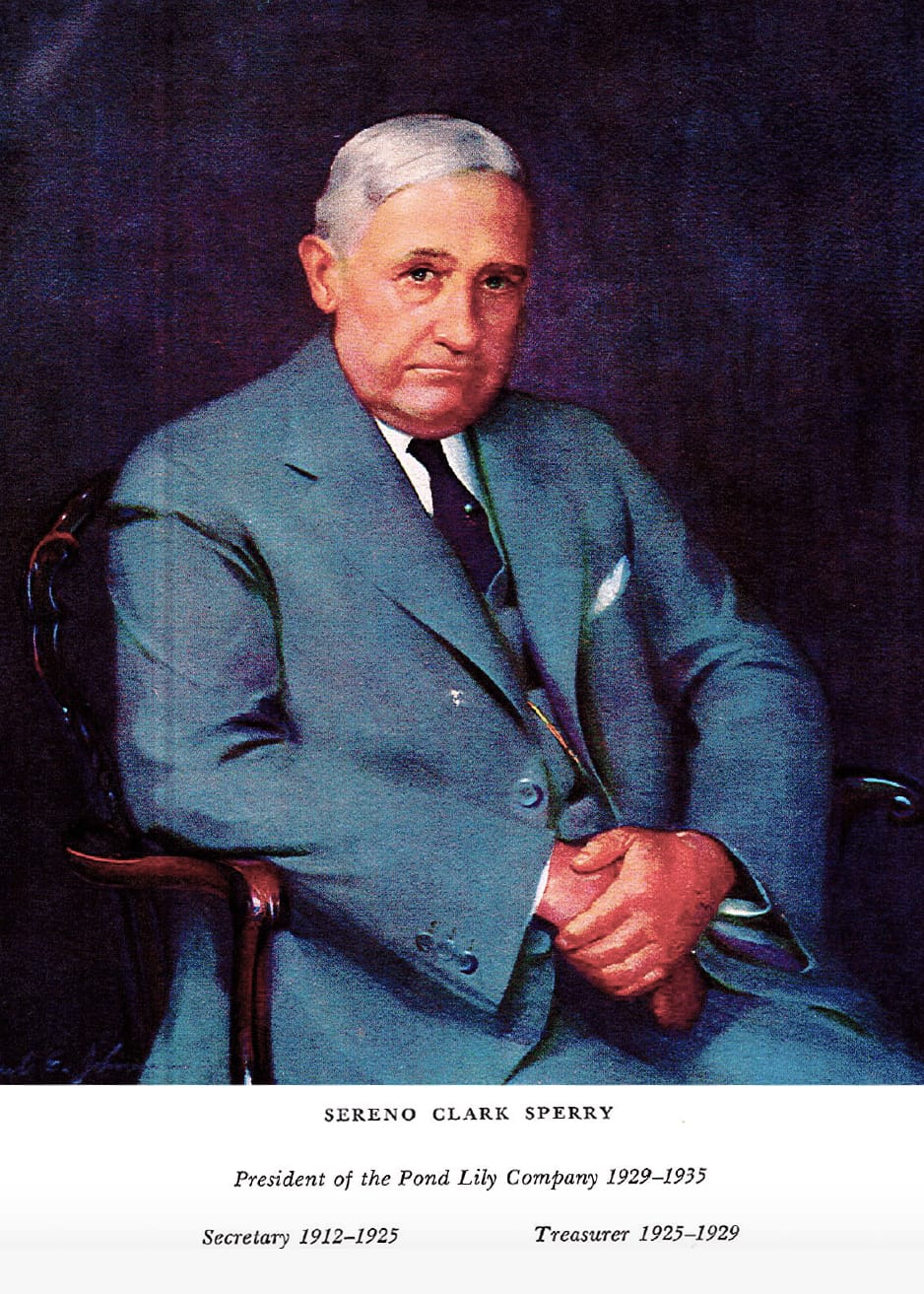
Sereno Clark Sperry (1865–1935) was a well-regarded businessman and civic leader in New Haven, according to a biographical sketch by Everett Gleason Hill in his Modern History of New Haven, Volume II. Sereno had two connections to the Sperry family, through the brothers Thomas and Ebenezer, who were members of the original Sperry family that settled in the early 1640s on land that would later become Woodbridge.
Thomas and Ebenezer's lines converge with the marriage of Sereno's parents, William Wallace Sperry (1839-1907), a shipbuilder and Civil War sergeant major, and Rhodella Ameila Armstrong (1842-1923). This couple were also 5th and 6th cousins several times over, through other family lines — including the Clarks, Baldwins, Botsfords and Coopers — not uncommon for people living in the New Haven area at this time. But as a result, on his father’s side of the Sperry family, Sereno was a 5th great-grandson of Richard and Dennis Sperry, while he was also a 6th great-grandson of this same couple through his mother’s branch of the family tree.
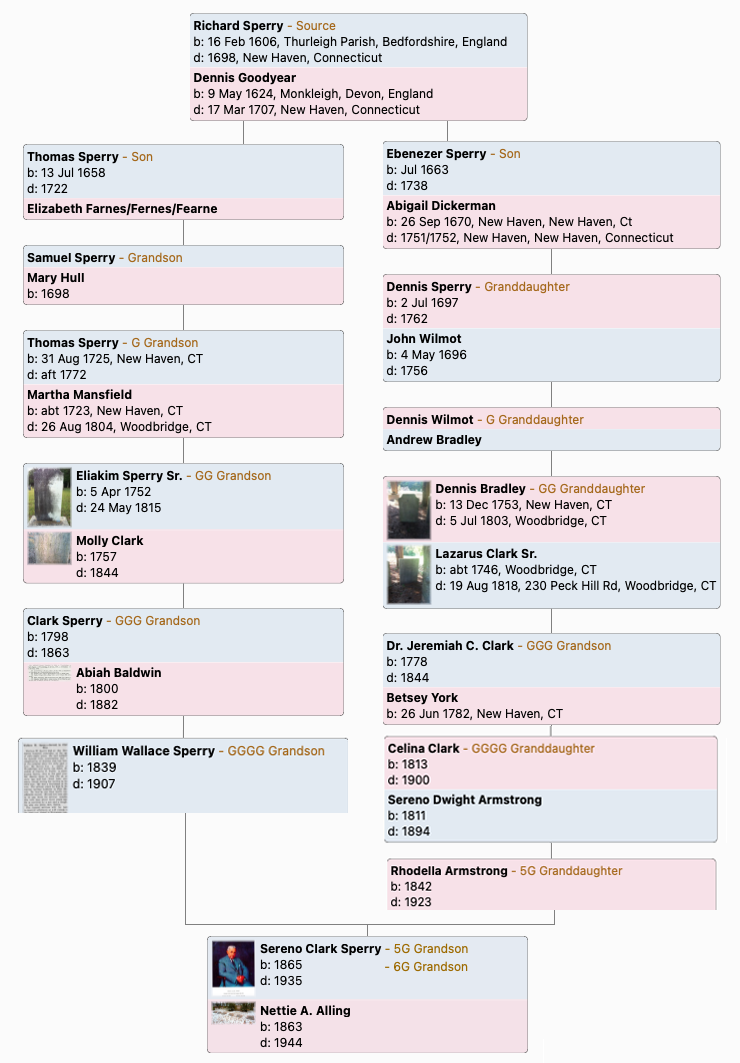
Sereno’s father, William Wallace Sperry — also known as Wallace W. — was a shipbuilder and served as a sergeant major in the13th Connecticut Infantry Regiment during the American Civil War. Family tradition also asserts that William was a retired sea captain, who told exciting tales of adventures in the South Pacific to his grandsons.
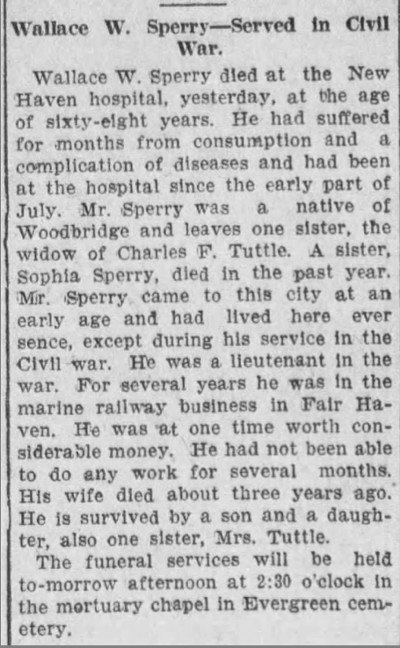
As the history of the Pond Lily Company recounts, William's son Sereno began his career as an office boy at Williams, Wells & Company, where he rose steadily over 21 years. He later served as purchasing agent for the United States Finishing Company in New York before joining the Pond Lily Company in 1912 as secretary and treasurer. Under his leadership, the company grew into a successful manufacturer of dyed and finished cotton goods, with products distributed across the U.S., Canada, and beyond.
A lover of the outdoors, Sereno enjoyed hunting and fishing, as his obituary noted (Sereno Sperry Dies Suddenly In 70th Year - Pond Lily Company President Suffers Heart Attack in Pine Orchard, New Haven Register, August 12, 1935):
Mr. Sperry, according to Frank J. Mitchell Jr., a close friend, was very philosophical. He was keenly interested in fishing and an ardent hunter of big game in the Maine and Canadian woods. His tastes were simple. He was a firm believer in Americanism, was a builder and worker, had no political aspiration or affiliations, bore a constant loyalty for his friends and fellow workers and was a philanthropist in a quiet way.
His travels carried him to distant points throughout the world. During the World war, he served in Company D of the Home Guard, while his three sons served in the United States Navy. Since the first automobile was introduced to the present day, Mr. Sperry never operated one himself.
In 1890, Sereno married Nettie Alling (1863-1944), a daughter of James E. Alling and Addie Denney Alling, and together the couple raised three sons: Sereno Jr., Paul, and Armstrong, each of whom would leave their mark in various fields and two of whom also served in key leadership roles at the Pond Lily Company. According to a biographical sketch of their youngest child, at the time their children were born the family lived at 134 Whalley Avenue in New Haven near the intersection with Sperry Street. By 1906 the family had moved to 362 Fountain Street in New Haven, where the present-day Fountainwood condominiums are located, adjacent to Marvelwood Drive.
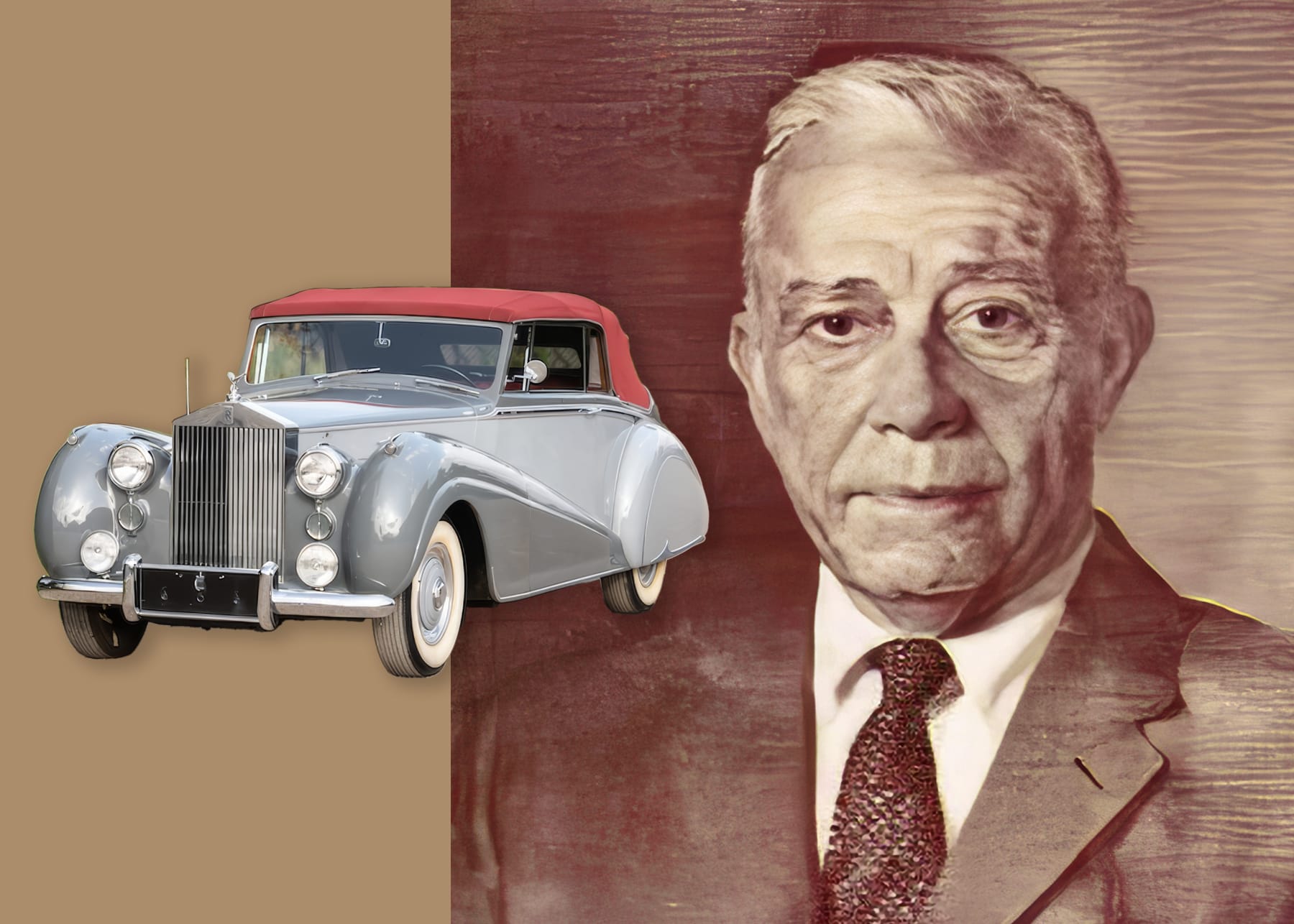
Sereno's namesake firstborn son, Sereno Clark Sperry, Jr. (1891–1964) was a key leader of The Pond Lily Company, driving its growth and diversification for over five decades. Joining in 1912 at age 21, he played a pivotal role in expanding the company into textiles and materials for the booming automotive industry, ensuring its relevance in a rapidly evolving market.
Over the years, he held several leadership roles, from Secretary in 1925 to Secretary-Treasurer in 1935, the year his father died. Sereno was later elected President in 1944, a position he held until his passing in 1964, and guided the company through post-war and mid-century industrial modernization. His leadership coincided with the company’s expansion into textiles and materials for the booming automotive sector — including fabrics for convertible tops and artificial leather for car interiors — and reflected his keen ability to anticipate and adapt to changing industrial trends. His foresight and understanding of the automotive market ensured the Pond Lily Company remained competitive, particularly in adapting to meet the evolving demands of the automotive sector.
Sereno’s professional focus on this sector suggests an appreciation for the transformative power of automobiles and hints at his personal appreciation for the artistry and engineering of fine vehicles. This connection is perhaps best exemplified by his ownership of a 1954 Rolls-Royce Silver Dawn Park Ward Drophead Coupe, one of only twelve ever built. This elegant convertible, featuring a two-tone grey and maroon colorway, bespoke interior, and cutting-edge features like a power top and white wall tires, epitomized Sereno's refined taste and appreciation for innovation. This Rolls-Royce was kept in Sereno’s garage at his home in Woodbridge from June 1953until he traded it in April 1959 for a brand-new Bentley Continental Flying Spur—another luxury automobile reflecting his evolving passion for the finest in British motoring. Sereno’s Rolls-Royce, with its swooping black fenders and timeless craftsmanship, later became a prized collector’s item.
This alignment of his personal interests with his professional endeavors underscores Sereno’s forward-thinking approach throughout his 52-year career at the Pond Lily Company marked by innovation, adaptability, and a commitment to excellence in both industry and artistry — exemplified by his appreciation of the exceptional automobiles that passed through his care.
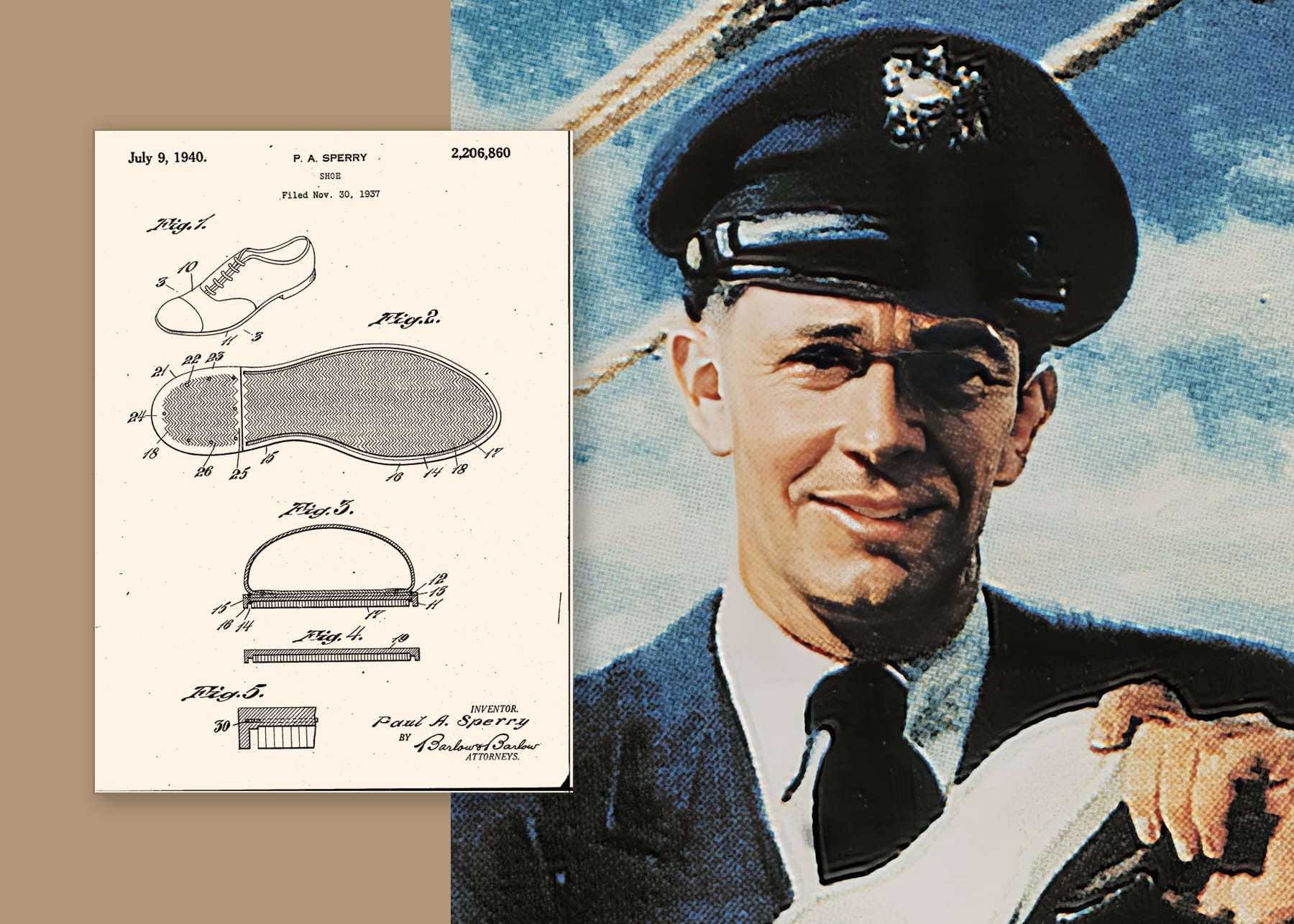
Paul Alling Sperry (1895–1982) was the inventive middle brother of the Sperry family. Paul carved his own path as a pioneering inventor and entrepreneur. After serving in the U.S. Naval Reserve during World War I and inspired by his love of sailing, Paul created the first non-slip boat shoe in 1935, founding the iconic Sperry Top-Sider brand — still in business today. His innovative design, inspired by the natural grip of his dog's paw pads, revolutionized footwear for sailors and became standard issue for the U.S. Navy.
In addition to this inventive achievement, Paul was an avid outdoorsman with an abiding love of hunting and the natural world. He founded Sperry Natural Decoys, producing innovative balsa wood duck decoys, and enjoyed sailing and exploring the outdoors. Paul also served as president of the Pond Lily Company, where he provided leadership in the business of manufacturing. Beyond these roles, he explored diverse interests as a photographer, screen printer, and outdoorsman, contributing to industries ranging from fine art to maritime innovation. Paul’s inventive mind, adventurous spirit, and love of nature left a legacy of practical creativity and enduring impact.
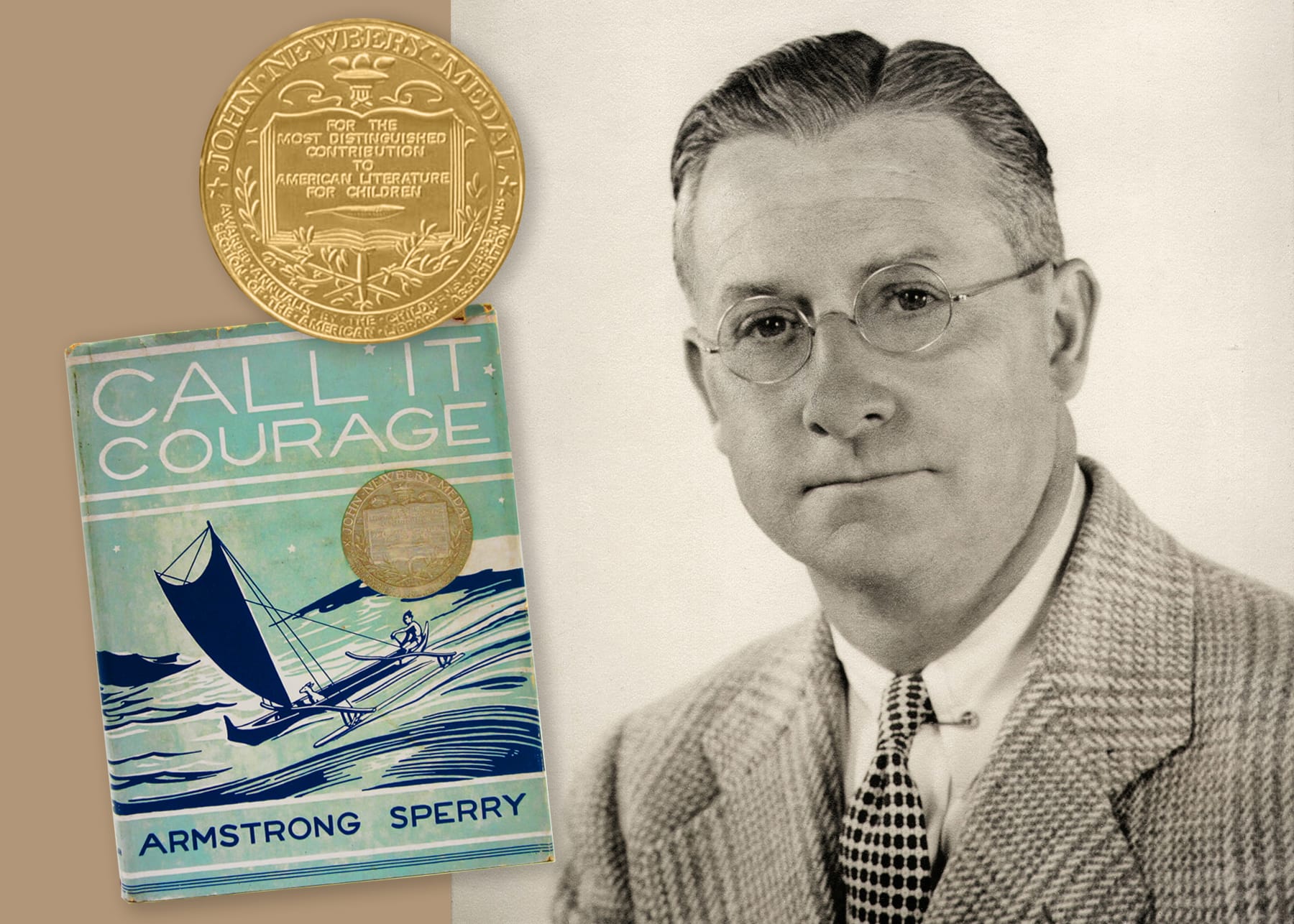
Meanwhile, youngest brother Armstrong Wells Sperry (1897–1976), who was also born in New Haven, became an acclaimed writer and illustrator of children’s literature. He and his older brothers grew up surrounded by tales of the sea, inspired by their mariner ancestors and authors like Herman Melville and Robert Louis Stevenson, according to his grandchild Margo Burns who has created a remarkable website that serves as a loving tribute to his memory.
Armstrong studied art at the Art Students League of New York, Yale School of Art, and the Académie Colarossi in Paris and after serving in the U.S. Navy during World War I he traveled extensively in the South Pacific — including visits to Tahiti, Bora Bora, and the Fiji Islands in the early 1920s — and immersed himself in the local cultures that would influence his work. Initially an illustrator, he created covers for books like Tarzan and the Lost Empire before writing and illustrating One Day with Manu (1933), one of the first American children’s books to authentically depict Polynesian culture.
While some of his work reflects the cultural biases and prevailing attitudes of his era and has receded from prominence, one of his novels in particular — Call It Courage, published in 1940 — transcends those limitations, earning its place as a timeless classic in children's literature. A story of adventure, courage, and resilience that reflects the author’s love of the sea and a deep respect for diverse cultures, this novel was awarded the American Library Association's John Newbery Medal for most distinguished American children's book published in 1940. Today, Armstrong’s lasting creative legacy stands as a reminder that even creators shaped by their times can produce work that speaks across generations.
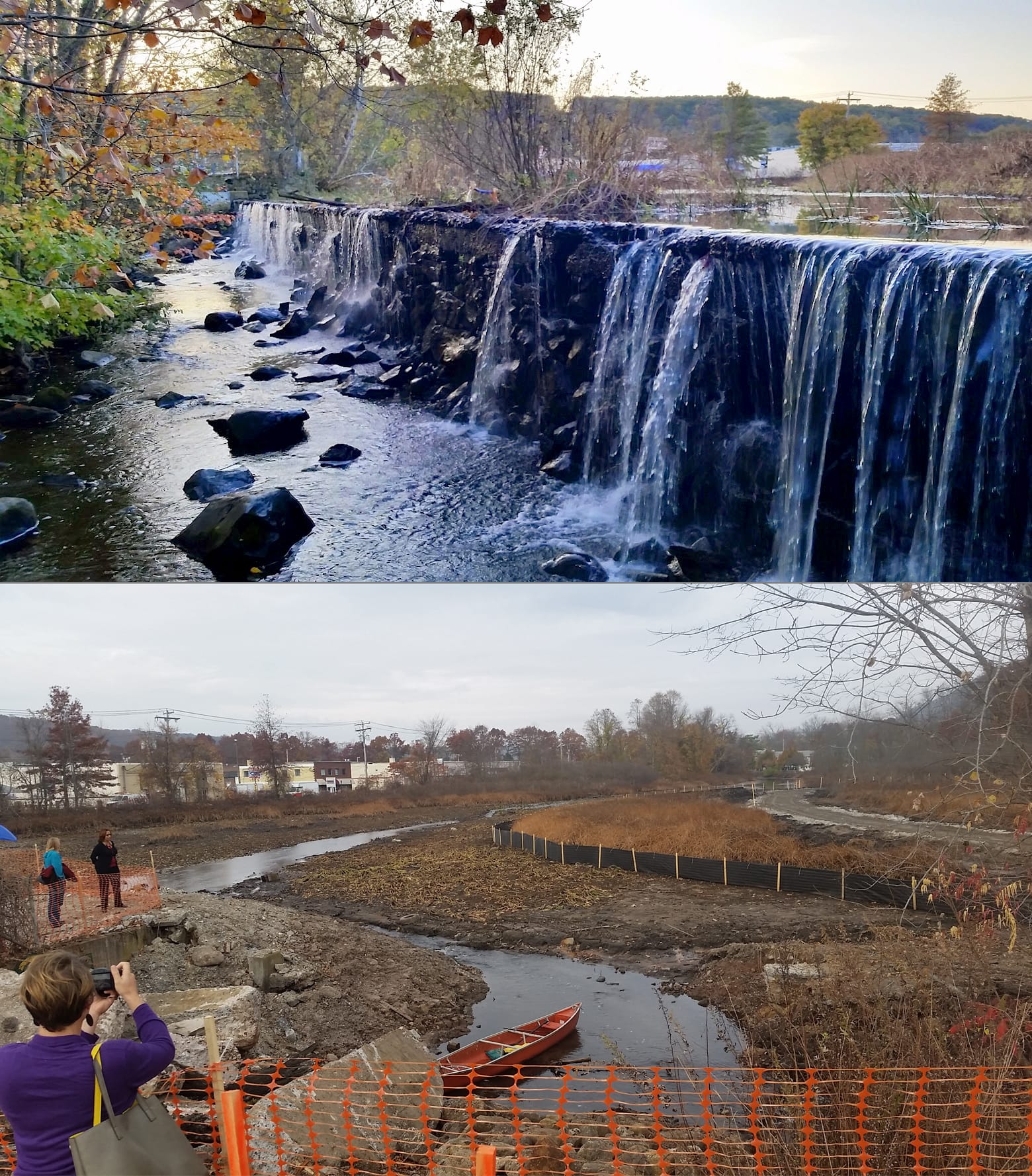
After a lengthy cleanup project, the area where the Pond Lily Company operated became the site of the now-closed Walgreen’s plaza. In 1996, 14 acres, including the pond, were transferred to the New Haven Land Trust. In 2015, Save the Sound and other groups were involved in a project to remove the Pond Lily dam, restoring the river’s natural flow and revitalizing the ecosystem. Finally, in 2018, the community celebrated the reopening of the preserved land, completing this land's journey from industry to ecological renewal.